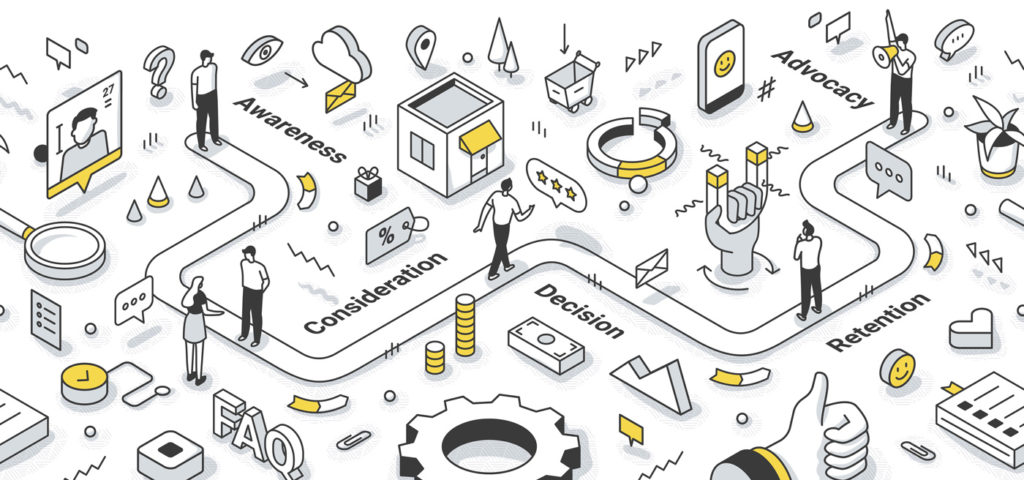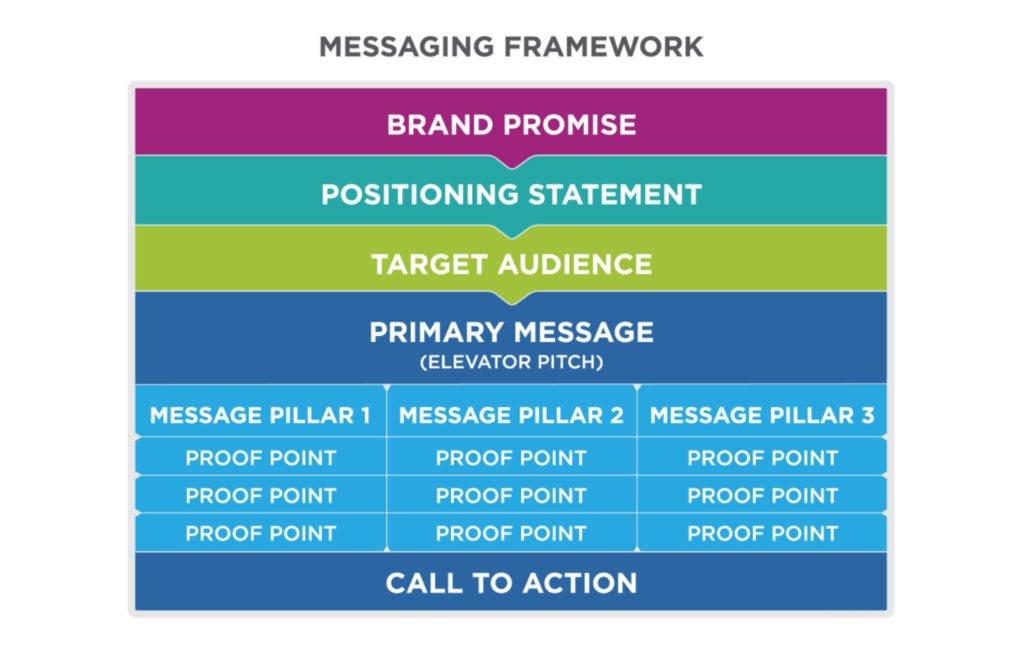How to Create A Brand Messaging Framework
Building a strong and unique is an intentional process. Whether you are launching an entirely new business or doing a brand refresh, a comprehensive brand messaging framework can help your team communicate with clarity and purpose.
In a nutshell, your brand messaging framework is a documented brand strategy for what you’ll communicate to various stakeholders. It defines your central message and helps you create a consistent and cohesive narrative about your unique selling points across multiple communication channels. Establishing this framework is key to helping your business build trust, credibility, and relevance with clients; it also helps differentiate you from competitors.
Here’s a step-by-step guide to creating an effective brand messaging framework, paving your way to successful brand communications.

1. Engage With Your Customers and Other Audience Groups
To create impactful brand messaging, get to know your target audience segments inside out. Research their needs, likes, and values to develop messaging that resonates with them. By addressing their pain points and tapping into the emotional and rational drivers behind their motivations, you can truly connect, foster loyalty, and boost your brand’s success.
When determining the best brand messaging framework strategy to appeal to your target audiences, analyze the following attributes:
- Demographics, such as age, gender, socioeconomic status, income, education, marital status, and profession
- Psychographics: characteristics like attitudes, aspirations, lifestyle choices, and other psychological criteria, including emotional decision drivers.
- Interests and hobbies
- Consumer behaviour, including their preferred social media networks and payment preferences
2. Conduct a Competitor Analysis
The first step in examining how you stand amongst your competitors is to investigate their strategies. You need to identify what makes your brand pop; a competitor analysis helps you clarify and strengthen your value proposition.
Measuring yourself against competitors helps you understand how they position themselves. Then, you can capitalize on that knowledge to avoid getting drowned in a sea of sameness and stand out to your customers and other audience segments. You can strategically take advantage of vulnerabilities in competing products, services, and solutions and sharpen your unique brand messaging framework accordingly.
Identify Your Competitors
You probably have an idea of who your direct competitors are—but if you’re unsure, perform an online search for your service or offering. Check whether the listed websites market to the same audience and whether their offering solves the same problems.
Choose competitors who fall into a similar price, quality, or level-of-service category as you, depending on what you offer, as well as market leaders. Including market leaders in your analysis gives you something to work towards.
Analyze the Customer Journey
Take a journey through your competitors’ websites as if you were an ideal customer or visitor. Identify aspects of the experience with their product, solution, or service that you like. Consider if this can be uniquely adapted to fill gaps in your offering.
Compare your pricing strategy, if applicable, and possible reasons for pricing gaps. Ask yourself: are you more affordable or expensive than your competitors? Why is that? Does that align with how you want your clients to perceive you (e.g. premium versus more accessible)? Understanding how and why your offering reflects the value for its price will help inform your messaging framework.
Review Competitors’ Marketing Strategies
Review the channels and messaging your competitors use in their marketing strategies. Are their channels performing better than yours? What you are doing differently from them? What are the continuities?
3. Develop a Unique Brand Voice
Just like a person’s personality makes them unique, so does a business’s personality. The next step in building your messaging framework is to develop a brand voice that not only sets you apart, but stays true to your organizational purpose and values – those foundational elements that inform every step of your brand development. An appealing and unique brand voice can improve relatability, recognition, and customer loyalty.
The key to developing your brand voice is first defining your brand personality. Is it playful, fun, serious, informative, or irreverent? One thing we’ve found that helps with this process is pinpointing a brand archetype, which helps humanize your brand. Is your brand a caregiver? An explorer? A creator?
Not entirely sure yet? Figuring out what your brand is not can also help you pinpoint it. During a brainstorming session, your team may determine that your brand is not too serious, pretentious, formal, or aloof. On the flip side, this might mean your brand is: friendly, humble, informal, and down-to-earth.
The ultimate goal, here, is for customers to easily recognize your brand no matter the medium—mobile, email, social media, or billboards. While it won’t happen overnight, having a consistent tone of voice is key. It’s no longer just about the visual aspects of your brand, as important as they are; what you say and how you say it are equally important in boosting brand recognition.
4. Build Your Brand Messaging Framework
Once you’ve done your audience and competitor research, and defined your brand voice, you can start to craft and tailor your messaging with pinpoint accuracy. Employing a message house framework can help you develop consistent on-point messages.
A message house framework comprises, at minimum, three levels: a key message, supporting messages, and proof points. These work together to clearly communicate your value. Depending on what service or solution you offer, it may have several supporting messages and proof points tailored to different audience segments.
To develop a message house, identify the primary message you want to communicate. It can be for your brand as a whole or a specific campaign for your flagship services or new offerings; just keep it concise, memorable, and easy to understand – and focused on your audience and how it benefits them. Then develop supporting value statements, or pillar messages, that unpack and reinforce your main message.
With your main claim and something to back it up in place, all you need is proof to ensure a convincing message. Identify proof points that validate and substantiate your messages using evidence and facts.
Your framework might look something like this:

5. Evaluate and Optimize Your Brand Messaging
Changing consumer preferences and market competition mean even the most thorough communications plans may require periodic updates. Your brand messaging framework is not a set-it-and-forget-it task. While the initial draft will require the most work, failing to evaluate your strategy regularly and make adjustments as necessary will drive your brand into irrelevance quickly.
Give Your Brand Messaging the Attention It Deserves
A strong brand message sticks with consumers and other audience groups, and differentiates you from competitors. Navigating the complexities of brand development, design, and establishing a messaging framework can be challenging while you’re trying to run a business; however, not giving these aspects the attention they deserve can impact your business identity negatively in the long run.
Investing in brand development is undoubtedly one of the most important things you can do for your business’ long-term success. That’s where Alphabet® comes in. We’ll work with you to develop and execute a brand messaging framework that reflects your business personality, sets you apart, and resonates with your audiences.
Contact our brand experts today and bring your brand to life.